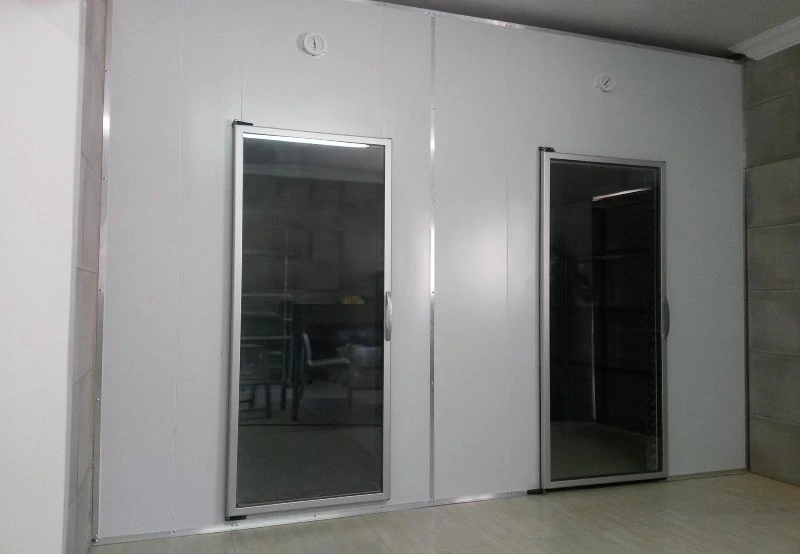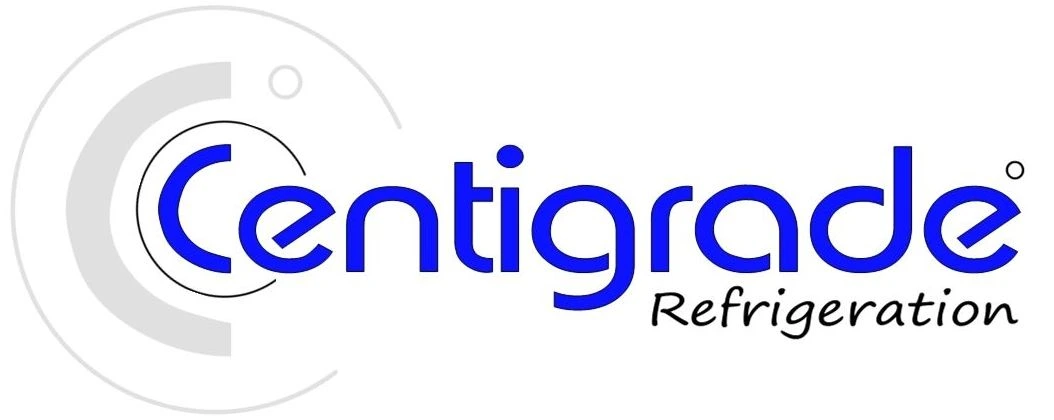Cold Room User Guide
Walk in cold & freezer room ‐ Quick guide
Using our Cold Room User Guide in Understanding your cold room will save you money and frustration. Many refrigeration problems are caused by not understanding the operation of commercial refrigeration equipment. A walk in cooler / freezer moves heat from the box through the evaporator and then displaces it through the condenser. Typical cold room temperature ranges are from 2 degrees (cut out) to 6 degrees Celsius (cut in). Below 1 degree a forced defrosts cycle is needed to avoid freeze ups in a Cold‐room. Typical Freezer room temperature ranges are from ‐18 degrees (cut out) to ‐14 degrees Celsius (cut in).
Cut out‐ Compressor stop.
Cut in ‐ Compressor start.
How Your Walk in Freezer Works
The basic cycle of cooling and warming is the same as with a walk in cold room. The walk in freezer in this example comes on at ‐14 degrees and runs until the box pulls down to ‐18 degrees Celsius .
Then the condensing unit turn off. The air in the box warms from heat gain through the walls, floor and the product. When the temperature reaches ‐14 degrees, the condensing unit comes on again to repeat the cycle. The evaporator fan runs during the cooling and warming phases as described above. The fans do not run during defrost.
How Your Walk in Cold room Works
This is how a walk in cold room works. This example will use a box that has a thermostat that is set at 2 degrees with a 4 degree differential. The temperature has risen to the set point of 6 degrees. The thermostat closes and the compressor and condenser fan comes on. The fans blow cold air out of the evaporator. The air circulates around the box absorbing heat. The warmed air is pulled into the back of the evaporator. The air is cooled as it passes through the evaporator. The evaporator fan continues to run as the temperature drops to 2 degrees .
There may be slight ice builds up on the evaporator. This is normal, since the coil in the evaporator is about 12 degrees colder than the 2‐6 degree air entering it. When the temperature reaches 2 degrees, the thermostat cuts the compressor and the condenser fan motor off. The evaporator fans continue to run. Fans in a cold room should always be running.
Heat is absorbed through the walls, from the floor and from the product. The temperature continues to rise. Any frost that was built up on the evaporator will now melt . This is called off cycle defrost. The air needs to be at least 1+ degrees for dependable defrost. The air in the box continues to warm until it reaches 6 degrees. Then the thermostat calls for cooling again.
Remember
If the thermostat on a cold room is turned too low, the evaporator will freeze. (The defrost heaters on a freezer prevent this from happening).
The difference between Cold and freezer room defrosts‐
Cold room
The air in a cold room is warm enough to defrost the evaporator during the off cycle. If the air temperature in the box is below 1 degree, a timer needs to be used to insure adequate defrost. The condenser is cut off and the evaporator fans continue to run.
Freezer room
In a freezer room the air is too cold to defrost the evaporator. A defrost timer cuts the condenser and solenoid valve off, the system then pump down to lower the pressure in the evaporator and cuts on electric heaters. The evaporator fans are off during the defrost cycle. The air in the box may warm during defrost, especially if there is not much product in the freezer. The air temperature in the box can rise up to +10 degrees but the product temperature will not rise. (Note: there is 4 defrost cycles of 30min each in 24 hours)
How to care for your walk‐in cooler
How a person can unintentionally Increase repair bills.
Many breaks down calls are unneeded. There is really nothing wrong with the unit. It could be operating normally for the conditions but not living up to expectations.
Here is a typical example of this.
A refrigerator is warm after repeated openings. This is normal. A
well‐meaning employee notices and turns down the thermostat. Now the box doesn’t shut off to defrost and the evaporator freezes. The box warms up because it is not getting sufficient air through the evaporator due to ice build up on the fins. The technician thaws the evaporator, resets the thermostat and checks the system out. He determines that there is nothing wrong with the unit. He writes out a bill for travel time and one hour of labour.
Now he has to hand a bill to the customer for not fixing anything, because nothing was broken. He doesn’t want to deal with an upset customer or have that customer call his boss, now the technician changes the perfectly good thermostat and the whole awkward situation is avoided.
Dirty condensers kill cold and freezer rooms.
It causes a loss in cooling capacity, high‐energy usage and high compressor temperatures. The high temperatures cause the oil in the compressor to break down. This results in compressor failure. The simplest way to clean the condenser is with a stiff brush. Gently brush it off, in the direction the fins run. But brushing only removes the debris on the outside edge of the condenser coil. It still can make a big difference, even if you do nothing else.
Having the condenser blown out is best. It cleans the condenser all the way through. Compressed air can be used. Make sure there is no oil being blown out with it. That would make the problem worse. The dust would start sticking. Using a small air compressor is the simplest solution.
How your Voltage Comparator works (If installed)
Single phase 220V
The Voltage comparator monitors the supply voltage. The output relay energizes if the voltage limit is within the over and under voltage limits and de-energizes when the voltage is outside this range. If the Voltage comparator switches off on over or under voltage, it will monitor the power supply until it is in it’s sufficient range for the relay to energize again. After the relay is energized it will have a 180sec start up delay in which time the green light on the Voltage comparator will flash.
LED’s
Over voltage – Red
Under voltage – Red
Supply healthy – Green
Three Phase 380V
The three phase unit monitors the supply voltages. The output relay energizes if the phases are all present, in the correct sequence and each voltage is within (5 – 15%) range of each other.
The relay de-energizes on:
a. A phase voltage imbalance exceeding the adjustable limit (5 – 15%) .
b. Total failure of one or more phases.
c. Incorrect phase sequence.
d. Supply exceeds 15% under or over nominal voltage.
If the unit switches off for one of the above reasons, it will monitor the power supply until it is in it’s sufficient range for the relay to energize again. After the relay is energized it will have a 180sec start up delay in which time the green light on the Voltage comparator will flash.
LED’s
Over voltage – Red
Under voltage – Red
Supply healthy – Green
We hope our cold room user guide has been of assistance to you.

